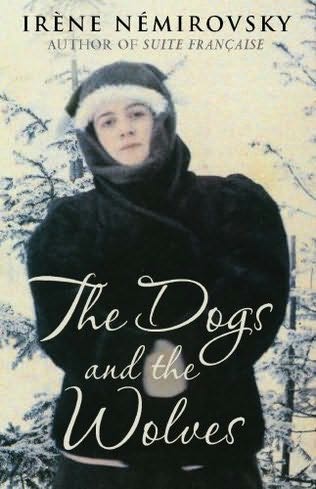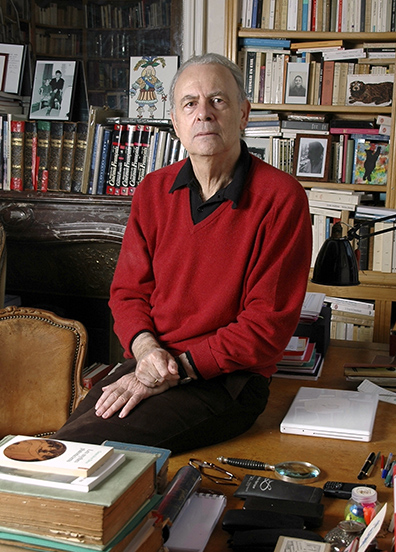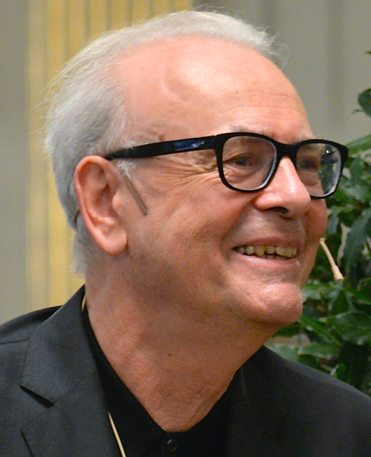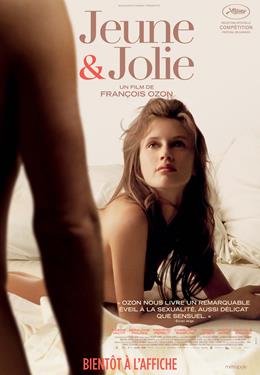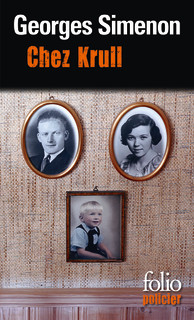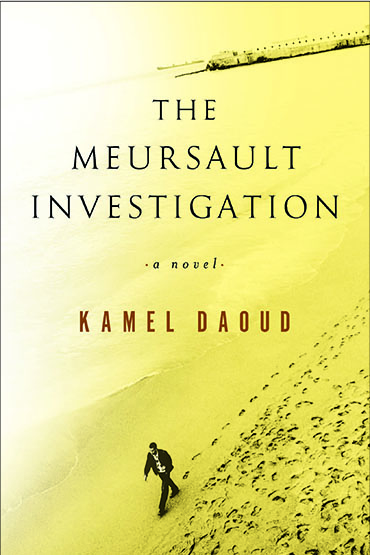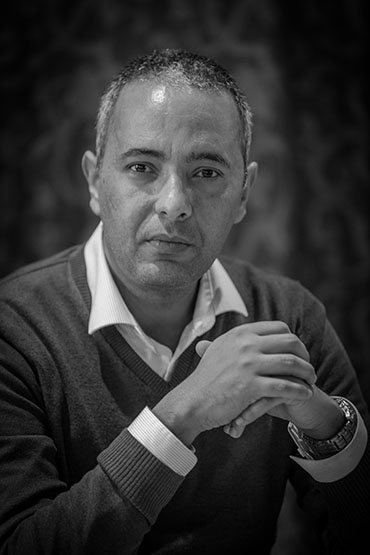I haven’t had the stamina to write full reviews of what I’ve been reading and watching before my physician-assisted suicide, following the fatilure of ever-harsher chemotherapy regimens for large B-cell lymohomal Some notes about them I’ve e-jotted.
I’ve been watching (in horror) “When They See Us.” The first episode of police bullying is really hard to watch. The second one showing the prosecutor and jury ignoring many reasonable doubts in the conflicting coerced confessions and the total lack of physical evidence is somewhat easier to watch, since I have seen many miscarriages of justice on tv. The third episode is confusing, because I don’t know when it takes place. One to go. I’ve already watched Oprah interview the actors and the Exonerated Five (formerly “The Central Park Rapists” whom Donald Trump advocated executing)
I enjoyed Scorsese’s “Rolling Thunder Revue” (he had nothing to do with the shooting in 1975-76), partly because Dylan actually tried to answer questions, and because “Hurricane” Eliot, Sam Shepard, Allen Ginsberg, and Peter Orlovsky (I’d never heard Orlovsky before) are brought back to life, but for the songs Dylan performs (including much of “A Hard Rain’s A’gonna Fall,” “Knocking on Heaven’s Door,” and “Hurricane”). As for his Nobel Prize ceremony, Patti Smith leads off. It never occurred to me that Dylan has blue eyes (“Hard Rain” is addressed to a “blue-eyed son,” but… Sharon Stone is a surprise addition (she joined the tour, as did Joni Mitchell; I think Joan Baez dropped out), as is Ronee Blakeley (who was a backup singer). Electronic violinist Scarlet Rivera is prominent onstage and has a quirky interview segment. Dylan frequently drove the tour bus and painted his face white. They went to the prison where “Hurricane” was being held, and to the Tuscarora reservation.
I also enjoyed the Netflix reboot of “Tales of the City,” bringing back Laura Linney and Olympia Dukakis. I don’t like the out-of-the-past blackmail (the whole 9th episode is a flashback to 1966, culminating in the Compton Café riot) of Anna, but she dies with dignity, surrounded by love, buoyed up by mass support in the last episode, shortly after her 90th birthday (Dukakis is 88 btw). I was underwhelmed by Ellen Page’s Shawna, annoyed by the twins, slow to warm to Murray Bartlett’s Michael (formerly “Mouse”), though I liked his young boyfriend Ben (as embodied by Charlie Bennett), García’s FTM Jake Rodriquez, and Paul Gross’s Brian Hawkins (one of my favorite characters going back to the first book). I failed to recognize a number of locations, though Coit Tower remained visible from 18 Barbary Lane. Episode 9 is the highest rated one on IMDB! Some of it was filmed in Yonkers and some in NYC.
And I enjoyed Sue Roe’s The Private Life of the Impressionists. Though charting the frequently changing residences (in Paris and in villages around it), the major liaisons, and the struggle to eke out survival with the aid of gifts and purchases by Gustave Caillebotte, Édouard Manet, and Paul Durand-Ruel, there is quite a bit of macro-history (the Prussian War, the Commune, and various stock market crashes). Roe pays considerable attention to Cezanne, Degas, Manet, Monet, and Pissaro, but also to Mary Cassatt and Berthe Morisot — who posed at length for Manet, as well as exhibiting paintings with the “lunatics” labeled “impressionists,” a term of abuse in 1874, a favored sales device now. The plates include two pictures (one by Manet, the other a photograph) of Morisot, but none of her paintings (there is one that I don’t particularly like by Cassatt, and some of the greatest hits/scandals of Manet et al., nothing by Frédéric Bazille, who was a casualty of the Prussian war).
I have yet to try to write about My Father, Renoir, which I thought had too many digressions about minor characters, but which increased my regard for Renoir as dedicated to art (only some of which I like).
My favorite impressionist, Alfred Sisley, is a shadowy figure in Roe, once affluent, later struggling to feed his family. She increased my regard for Caillebotte, Degas, Manet, and Pissaro (as people; much of the art of Degas and Pissaro leaves me lukewarm), presents Monet as a cadging cad. I also learned that Gustave Courbet was sentenced to be executed for his part in the Commune, though he slipped away to Switzerland. I didn’t realize his life overlapped that of the early impressionist (après la letter) painters He died in exile on the last day of 1877, having been born in 1819. He was painted in 1865-55 by Monet and painted Baudelaire in 1848.
I didn’t know that Pissaro sponsored/mentored Gauguin as well as Cezanne and was open to the influence of Seraut and Signac. (Or that Courbet was considered by some as the grandfather of cubism, as Pissaro was regarded as the father of impressionism.)
I am astonished that Degas was criticized for not being able to draw. I don’t like Berthe Morisot’s brushstrokes, at least in her pictures of people (she did few landscapes that I mostly like).
We’re also watching the first season of “The Good Fight” and the third of “Rita.” Both have strong women in the central roles.
I watched the hast episode of “When They See Us.” The first half (plus) is harrowing, though I know it does not show anything close to the full horror, only beatings, not rape. The end is triumphant, though people say that the exoneration and settlement could not restore the lost years and never-ending wrong of what police and prosecutors (shown unrepentant and holding to blaming the exonerated five despite the DNA evidence and fit of the confession with the crime scene) did to boys from apparently loving homes. The original attack is upsetting, all the more so knowing that the perpetrator was going to rape and murder after the boys were framed.
“The Pleasure of Love in Iran” is a six-minute out-take from Agnès Varda’s 1977 “One Sings, the Other Doesn’t” (L’une chante l’autre pas). It mostly shows tiles and architectural detail from Isfahan, Iran. Native-to-Isfahan Darius (Ali Raffie, himself an Isfahan native) is showing his visiting French girlfriend, “Apple” (the one who sings, played by Valérie Mairesse) around. She sees the cupolas as being breast-like and the minarets phallic, he translates some poetry for her, and she writes one (on toilet paper). Only the title and a glimpse of “Pleasure” made it into “One Sings,” which clocks in at just over two hours without it. Darius is a character, the major male character I’d say, in “One Sings.”
Varda supplied voiceover narration and also wrote the lyrics for the songs “Apple” and company perform. Also, her own daughter, Rosalia Varga-Demy, plays Maria, Suzanne’s daughter (and Varda’s then four-year-old son Matthieu also had a role as Zorro).
I’m not quite convinced that such very different women would be friends for life, but Suzanne quietly goes about getting from being a 22-year-old helpless mother of two forced to return to something akin to slave labor on her parents’ farm into a professional working in a family planning clinic (where Apple comes to have her second child, the one she is going to keep, having let Darious take their son back to Iran, where he was conceived but not born). Apple is more impulsive and rebellious and something of an artist (songwriter), one with more success that Jérôme, the photographer-father of Suzanne’s two children and of the one she has aborted with funds scammed from her own parents by Pauline (before she becomes “Pomme”). Varda said she was thinking of Modigliani’s common-law wife desperately trying to subsist and to support an artist with few to no sales. Jérôme, not a womanizer like Modigliani, had a wife. The viewer does not know if he had had children with her, too.
The Criterion edition also includes the more in-your-face 1975 “Réponse de femmes” with more full-frontal female nudity, and a superb documentary, “Women Are Naturally Creative,” about Varda the film-maker (and mother) made by Katja Raganelli. It includes shooting of the last scene of “One Sings” and interviews in her home office and kitchen, plus a dinner in which she finally talks about the independence from each other in the film-making by her husband Jaques Démy and herself. Though she had the same short-in-back hair with bangs in front, and comes across as genial, she came across as less pixieish than in her late documentaries. I thought she looked more Greek, too.
I enjoyed Varda’s 1967 documentary about looking up a Greek uncle (actually a first-cousin once-removed) on his houseboat in Sausalito, “Uncle Yanco.” The next year, she shot “Free Huey demonstrations and some interviews of black Oaklanders. Both have interest as time capsules. There is no real analysis of the Panther program. Huey sort of stammers, but does not have the high-pitched voice others have derided. There is also a speech by Stokley Carmichael, an interview with Eldridge Cleaver, and a scene of Kathleen Cleaver working those in a queue, explainging what the Panthers were about
The restoration of all these films was backed by Martin Scorsese. There’s another California Varda (on eclipse), “Lions Love (…and Lies” I have yet to see.
I found Darius attractive with long hair, Marie’s boyfriend Théodore even more attractive, with longer hair. There is full-frontal female nudity, but no sex scenes. The scenes of Darius and Apple in bed are shot very discreetly with the sheets up nearly to their chins.
+++
From the Devil’s Dictionary: “history, n. An account mostly false, of events mostly unimportant, brought about by rulers mostly knaves, and soldiers mostly fools.”
Roy Morris Jr.s biography of Ambrose Bierce: Alone in Bad Company is very good on his Civil War experiences, and opts for the interpretation that Bierce killed himself in the Grand Canyon. I find it difficult to believe that an old man could get anywhere there that no one has gotten to in the last century. If he killed himself, I’d guess it was in Chihuahua mountains.
Morris provided a comparison with Hemingway that seems apt to me:
For both men, the fear of cowardice seems to have been rooted in a less-than-satisfying relationship with their fathers, men who rightly or wrongly were perceived by their sons as being weak and cowardly. Hemingway’s father is ruthlessly depicted in his son’s fiction as a wife-dominated ditherer; Bierce’s father, to the extent that he is depicted at all, is usually seen as a distant authoritarian whose more forceful wife seems to have had the upper hand in their relationship. Not incidentally, both Hemingway and Bierce detested their mothers and the homophobic tone (explicit in Hemingway, less obvious in Bierce) may perhaps be traced to a lingering fear of female—that is, maternal—domination. 204-05
I think that Morris’s Gertrude Stein Has Arrived lifted all the good lines from Gertrude Stein’s Everybody’s Autobiography, which, for some reason, I am reading (she’s already being fêted in America). She must have had some charm/charisma in person, but I tire of her frequent proclamation of being a genius, the only literary one of the century, in the company of Picasso and Einstein. Morris also tells the stories better without Stein’s doubling back for repetitions (little is developed, either in anecdotes or in support of bald assertions about French and American essences).
10 July 2019
I finished Everybody’s Autobiography, though only after being bored by the selected poetry of Jaques Éluard—which I first heard quoted in “Alphaville.” A more passing mention in “One Sings, the Other Doesn’t” finally prompted me to get the book from the library. I liked the narration (read by Delphine Syrig) in Varda’s “Documenteur” (1981) more. It has full-frontal male as well as full-frontal female nudity, two unrevealing sex scenes, and charming performances by her son, the then nine-year-old Mathieu Demy and Sabine Mamou (the editor of Mur Murs) as his single mother, gleaning furniture for their LA (Venice?) apartment. There are more murals, the focus of Varda’s documentary “Mur, Murs” from the year before. 105 minutes is an awkward length. It could have been longer or shorter,
Everybody’s Autobiography definitely would have been better shorter, with fewer repetitions, a fact-checker, and while fantasizing, why not tighter organization removing the cycling back to repeat what she had already written? It’s not gibberish, though many of the assertions are very dubious, and the generalizations based on very, very little.
She was high on Francis Picabia at the time and averse to the poetry Picasso wrote. She was enthusiastic about flying, driving, and everywhere in the US she went, especially Chicago and Texas. Alice B. Toklas seemed to enjoy the return to northern California more than Stein, whose “There’s no there there” has no connection to things having changed (mostly, 13th Avenue in Oakland had the same houses, though the one she lived in had been demolished).
She claimed that “the spoken language is no longer interesting, and so gradually the written language says something and says something differently than the spoken language” (13; her choice of verb interests me—isn’t “say” about spoken language?)
“Any life you look at seems unhappy but any life lived is fairly cheerful” (104)
“Their [French people’s] lives are their own it is not a secret but one does not tell it” (106—she never used semicolons and stinted on commas)
“Modigliani combines Italian art with Negro art and both these arts are admired by every one” (323, so why did he nearly starve; and it was African art that intrigued and influenced him, at least his sculptures)
+++
Ahmed Saadawi’s Frankenstein in Baghdad, published in Arabic in 2013, translated by Jonathan Wright and published in English in 2018, is, I guess “fantasy fiction,” verging on science fiction, as was Mary Shelly’s Frankenstein. The original Dr. Frankenstein was a scientist filled with hubris. Hadi, the maker of the creature in Baghdad with warring Sunni and Shi’ite militias and the American garrison in the Green Zone, is not trying to bring his amalgam of body parts to life, or to study what makes “life,” but only to assemble a corpse that can be buried.
The hideous-looking creature shows no signs of life to Hadi, but rises while the junk-dealer is sleeping , leaves, and starts killing people. He does not slay just anyone who comes along, rather this amalgamated body seeks revenge on those who killed the parts that have been sewed together to make his body. The soul of the new creature was a hotel guard, Hasib Mohamned Jaafar, who was blown up by a suicide bomber. The explosion results in scattered body parts that Hamid gathered and assembled into a corpse. Hasib’s soul needed a body to inhabit and moved into the one Hamid has put together.
For me, a major problem with the novel is that, the creature, variously called Whatitsname and Daniel does not have a particular personality and seems far too articulate to be Hasib Mohamned Jaafar. I am (perhaps oddly) more willing to suspend disbelief about reanimating a corpse. The reaction of the neighbors (terror) and the authority (determination to capture and eliminate a serial killer whose motivation none of them images) and even of the old Assyrian Syric Christian widow Elishiva who has prayed (to St. George as well as to God) for the return of her son Daniel, who went off to the Iraq-Iran war of the early 1980s imaging that he has returned, not least in that Whatitsname dons clothese that once belonged to Daniel and of the journalists who see a juicy, terrifying story to draw readers, are readily understandable.
Though there is very little character development, Saadawi sketches a number of character in post-Saddam post formal US occupation Baghdad, and shows the devolution of Iraq caused by greed and ambition as well as by sectarian (Sunni/Shia) fanaticism. The US forces are as sinister and to be avoided if possible as is the new Iraq government with many old (formerly Baathis) functionaries, most prominently within the book, Brigadier Majid, head of the Tracking and Pursuit Department (within the Secret Police). Hamid, Faraj, Abu Anmar et al. are trying to make a living amidst the decaying buildings of Bataween, a neighborhood which was Jewish or had a substantial Jewish population in earlier times (i.e., before Israel existed and ethnic cleansing swept majority Muslim countries).
Composed of diverse body parts, the amalgam that is killing those responsible for the killings that provided his body parts (new ones are needed as the old parts fall off when vengeance has ended the lives of those immediately responsible for their death and dismemberment) is an Iraqi rather than the member of a tribe or a religious community.
As his murders cause him the need for replacement body parts, there is no end in sight for his reign of terror, and he realizes that he has body parts from killers as well as from victims. Dwight Garner applied the concept “mission creep” to this, though I think Whatitsname continues to do the same thing: kill killers. Even within that vocation, it puzzles me that he does not go after those who send out suicide bombers and/or concocted the rationales for the violence. No clerics, no Americans, are killed in Whatitsname’s reign of terror that no one else understand is a program of administering lethal justice. Like Shelly’s menacing and hideous-to-look-at creature, Whatitsname feels misunderstood. His attempt to explain himself (on tape for a magazine editor who often seems to be the protagonist of the book (though Mahmoud al-Sawi is one of the least interesting of the novel’s characters), but what he said was sensationally garbled to maintain the reading public’s fear and loathing of an inexplicable serial killer…
The concept is interesting, and Saadwi juggles various plots with some skill (it is good that the book begins with a character list, since many names sound like other ones). As I’ve said, there is no character development (particularly in the case of Mahmoud al-Sawi, who seems unfazed by what he encounters of official terrorizing or from receiving the self-explanation of Whatitsname). There is a lot of violence, though other than narrating the results of explosions, the violence is not graphic. (That is the vengeance killings are not recorded in detail.) The book is not going to make anyone want to visit Baghdad. Most of the characters want to get out and away from it.
The novel won the International Prize for Arabic Fiction (the first Iraqi one to do so, and was shortlisted for the International Booker Prize. In an interview connected to the latter, Saadawi, who was born in 1973, listed his influences other than Arab traditions as Borges, Calvino, and Kundera, plus Jules Verne and H.G. Welles).
+++
Besides publishing his letters from Gertrude Stein and Alice B. Toklas (Dear Sammy, 1977), their protégé, Samuel M. Steward (1909-93) also portrayed their relationship somewhat peripherally in Parisian Life (1984), which is primarily a fictional version of another of their protégés British painter Sir Francis Rose, and centrally in two mysteries in which the pair together figure out murders. I read the second one, The Caravaggio Smile (1989),set in Paris, first, then read the first one, with the Steinian but not altogether accurate title Murder Is Murder Is Murder (1985), set in their summer house at Biligin in Ain province.
Having just read Stein’s exceedingly narcissistic Everybody’s Autobiography, I can say that Steward’s novel, set around the time she was writing that book (1938; the book was published the year before) fits almost perfectly with what Stein wrote about her life at the time. The one exception is that she only played the white keys on the piano, and Steward inexplicable has her only playing the black keys.
He portrays the dogs (the large poodle Basket and the chihuaha Pepe), the daily routine, and some elaborate breakfasts Toklas prepared for Stein and, in the middle of the book, Steward’s character whom he named Johnny Actaeon McAndrews, aided the investigation, which included splitting up the businesses in the village of Belly to inquire about what their neighbor Grand Paul bought the morning that he disappeared. “Jump-Up” Johnny does less leg work for the amateur sleuths than in Shawl, but beds a hunky policeman in both. In Murder, he also beds the couple’s Chinese houseboy, but none of the local peasants.
The deaf-mute Petit Paul, who is larger than his father, very muscular, and often semi-nude working in the Stein-Toklas under Alice’s directions attracts Johnny, but he knows better than to try to seduce him. A drunken Petit Paul was raped by their despised neighbor Debat, which enraged Grand Paul.
Alice spotted Grand Paul approaching Debat at the end of a field bordering a woods. Knowing that Gertrude would enjoy watching a confrontation, Alice puts down her telescope and calls Gertrude to come with her binoculars. By the time the partially deaf, large and sluggish older woman lumbers down to join Alice, only Debat is visible, however, so Alice is the only one who saw Grand Paul
After waiting two days for Grand Paul to return, the women go to the local police and suggest there has been a murder. Johnny, Gertrued and Pepe find the bag with most of Grand Paul’s purchases. They infer that he ate the bread and butter he bought and put some other things into his pockets rather than his bag.
The police arrest Debat, but are about to release him when the women return the next April and solve the case, not only determining who committed the crime of murder but who instigated it.
Some mystery mavens have found the whodunit predictable. My view is that the book is not a whodunit. As in Simenon’s Maigret novels, the whydunit is more important than the whodunit. Both are subordinate to invoking what life was like in the Toklas household. In both mysteries, Toklas is the prime mover of detection and the dominant force in the relationship (whatever their roles in sex may have been). There’s even a comic touch of S&M.
+++
Going the other way, I liked Agnès Varda’s 1980 “Mur Murs.” After a project on police brutality fell through, she started filming murals in Venice and continued as far as East LA, sometimes with the painters, sometimes with the models, at least once with both. I was disappointed that there was graffiti on many of the murals even back then, astounded by the Culver City DMV’s murals, and interested in the many murals, however varying the artistic talent involved. The documentary looks forward to “Faces Places” in putting images on buildings, but Varda does not appear on camera in it.
In contrast, I found her 1969 “Lions Love (&…Lies” horrendously boring. Though Warhol “superstar” Viva and the creators of “Hair” James Rado and Gerome Ragni are naked quite a bit, there is no full-frontal nudity, in contrast to many other Varda films. There is a long, boring scene of Viva naked lying on an air mattress in the pool with both of them in the water touching her or her air mattress. The use of tv coverage of RFK’s assassination and funeral seems obscene to me, though far more interesting than anything the three or visiting (clothed) filmmaker Shirley Clark. The most interesting scene not second-hand tv footage is a brief one in which Clark says she is not an actress and Varda briefly takes her place. The movie ends with Viva saying how tired she is of having to improvise lines, be naked, or speak to the camera. The camera stays on her wordless face in closeup another two minutes. Come to think of it, this is better than the opening sequence of a play on stage with talentless actors in Old West garb. I’m not sure Viva could act (I had not seen any other movie with her, though I think I saw her being interviewed by Dick Cavett back in the day), but I’m pretty sure she could have done better than the stage actors in “The Beard” did. Even her entrance to that theater with the two beaux was better than what was going on onstage.
There are also badly shot meetings of suits discussing final cut authority, but without a female director onscreen. (Clarke’s agent takes the meetings.)
+
Though generally very predictable, the Asian-American (Chinese-Korean) rom-com “Always Be My Maybe, co-written coproduced, and costarring Randall Park with stand-up comedian cowriter Ali Wong looks good, moves along, and has a surprise extended appearance by Keanu Reeves as an arrogant movie star. I also liked Michell Buteau as Wong’s assistant and James Saito as Park’s father.
I didn’t like the second half of Paul Eluard’s Selected Works any more than I liked the first. It seems that the anti-Nazi poems only began after they had been driven out. One 1944 couplet not set as verse spoke to one of my interests, though:
“not to punish the guilty, they maltreated prostitutes. They even went so far as to shave their heads.”
Prostitutes and mistresses rather than officials…
+
The title of Nigerian-born Chiwetel Ejiofo’s directorial debut “The Boy who Harnessed the Wind” is a plot spoiler. The famine in a Chichewa village in Malawi looks plenty dire and the fields entirely parched before the windmill connected to a pump (drawing from a well, which seems pretty finite a supplier to me) goes up. It is very jerry-built with parts of the boy’s father’s bicycle, something the father was very reluctant to sacrifice to his son’s book-learning (plus savvy). Ejiofo’s has great dignity, Maxwell Simba as the son (William Kamikwamba) great yeanring along with respect, persistence, and the mechanical and intellectual wherewithal to save his family and village with technology he read about in the school’s small library.
Tony again recalled that my mother cooked a beef roast and served sugar plum ice cream for dessert when he stayed over a Friday night when we were in 7th grade, then went to piano lessons with a Mrs. Walter Enger (not the teacher/coach who lived half a block away earlier) at 12th and Galbreath. And Terry remembers my sister’s excitement of searching for a head that was severed by a car rear-ending a truck out in the countryside. I don’t recall that, only the dyeing the peas crying jag one time when Mike Markman stayed for dinner.
Albanian Kosovo-born (1990) Pajtím Statovsi’s second novel, Crossing, lacks the humor and magical realism of My Cat Yugoslavia. I disliked both the endings, i.e., the endings to two narrative streams in the book). Even less a “gay novel,” though “queer” in multiple senses. The narrator is from Kosovo rather than Albania, living in Vienna, Sarajevo, Rome, NYC, and Helsinki. (The book was written in Finnish.)
+++
The first half of Jean Giono’s 1941 Melville bears some connection to Melville. The visitation of the Irish Adeline is Giono’s to a self less sensitive than Melville’s.
Ivo Andric(h)’s constantly spiraling back to repeat itself Omer Pasha Latas annoyed me. Thee are characterizations of Ottoman official (marshal, born Austrian, empowered to crush Bosnian rebellions) and painter with no plot. NYRB edition nowhere reveals when it was written or first published (posthumously).
Alfonso Bioy Casares’s (1972) Asleep in the Sun also seems to spiral often, though there is more humor than in the other two NYRB classics. I didn’t realize that psychotherapy was so big in Argentina. I guess I purchased some BC stuff for MSU in the Borges collection.
Richard Thorpe’s “Malaya” (1949) doesn’t really spiral, though Valentina Cortea’s torch singer (Blue Moon) seems to. Remarkably, the two leading men (James Stewart and Spencer Tracy) both are killed, though the rubber gets out to American hands, and the Japanese lead (Maui-born, Chinese-ancestry Richard Loo) also is shot. Back in the US, John Hodiak and Lionel Barrymore continue to operate. Sydney Greenstreet manages to survive in Malaya, Gilbert Roland doesn’t. Atmospheric B&W cinematography by 13-time Oscar nominee George J. Folsey.
&&&
I don’t know why Anita Brookner pressed Simeon’s Chez Krull/ Krull’s House (1939) on Julian Barnes as Simenon’s best. It seems one of the becalmed books set around WWII I hsve been reading (this one not freshly translated and prepublished by NRYB. It has the same circulating rather than progressing movement. The reader eventually learns who strangles the pale, naked, violated girl fished out of the canal at the start, and why the foreigners (Krulls) continue to appear different to their hostile (Catholic) neighbors in a canalfront town near the Belgian border on the eve on Nazi invasion (not that the Krulls or Nazis or have any “politics” (like those tacitly colluding the Trump and his white suprematicst supporters).
There is a more assimilated German-born family, the Schoofs, who seem present more for contrast with the Krulls than to advance any plot. The Schoofs speak Dutch at home and are not really German. (The supposed Krull money has made it only as far from Germany as Belgium.) Cousin Hans ‘blatantly and deliberately offends against the first law of the immigrant: do not draw attention to yourself. And by drawing attention to himself, Hans Krull also draws attention to those ‘impure’ relatives of his who live beside the canal where the town runs out. Simenon lays out with ruthless exactitude the way selfish, conscience-free greed exploits modest, hospitable decency” (–Barnes).
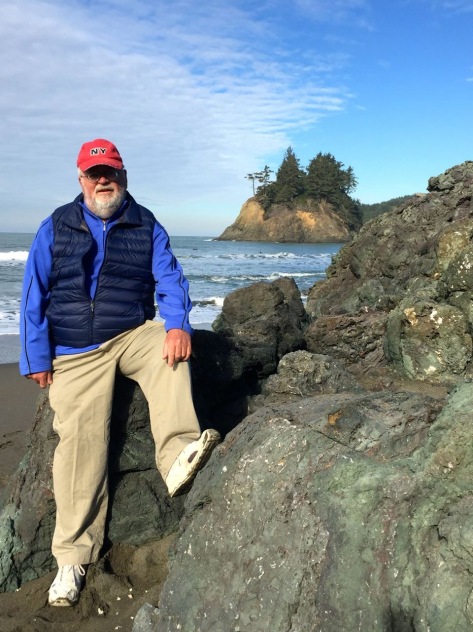
(3 years and 85 pounds ago)
I’ve enjoyed reading Wu Ming-Yi’s (2011) The Man with Compound Eyes. (blurbed by the late Ursula K. Le Guin).It encompasses a thoroughly imagined Taiwanese aboriginal culture (on an island east of Taiwan called Wayo Wayo) interethnic relations, the Pacific garbage vortex, earthquakes (““An earthquake does not have to kill you to induce mortal terror; it is enough that it can take away something dear to you”) and a tsunami, some romances, and the turn of Roald Amundsen against seal pup bludgeoning in Canada. (Not the 1928 “Red Tent” disappearance searching for Umberto Nobile and the crew of the Italia of more common record.) I’m also reading Henry Green’s Nothing, which also has a prominent cat character. Yi (born in Taoyuan in 1971) is among other things, an expert on the butterflies of Taiwan, though moths figure more prominently in the novel (his fourth, but the first to be translated into English; his sixth, the 2015 The Stolen Bicycle has now also been; there is a 2019 collection of stories and lyrical nature writing borrowing Mary Austin’s title, The Land of Little Rain).
“Only human beings can, through writing experience something separately together” (281), though I don’t understand or accept that “memory and imagination have to be archived separately.” (Does Wu believe this? I believe that he thinks loneliness is what produces culture and the willingness to relate stories to strangers [64])
“The islanders did not have writing, nor did they think that the world had to be remembered in written form” (36—how could they?)
If I were going to live longer, I’d read more of Wu and László Krasznahorkai’s (1954-) Baron Wenckheim’s Homecoming, just offered me by Vine (but it’s very long! And it’s the fourth part of a tetraology.)
&&&
It took us two nights to get through “The Good, the Bad, and the Ugly.” Neither the film nor the music are as good as “Once Upon a Time in the West.” There are lots of closeups, but few as super-tight as those in “West.” Plusa lot of sadism—more, I think than in “Once Upon a Time in the West.”
I think Eli Wallach is very funny, though also very sadistic. The Union captain is the talkiest role. Wallach has a lot more lines (has or improvised a lot more).
I don’t much like Morricone’s main theme for the movie. I barren Spanish desert standing in for northern New Mexico have their stark beauty.
And it is way too long, with some protracted scenes, not least the bridge battles. The DVD version is 14-16 minutes longer than the theatrical release (and still has a separate deleted scenes, including more torture of Turco). I can understand why Charles Champlin suggested the alternative title, “The Bad, The Dull, and the Interminable.” (The original tite was “Two Magnificent Tramps.” Van Cleef has less screen time than Eastwood and Wallach, who are a team in scamming bounties for Wallach before pursuing the loot in opposition to each other and to Van Cleef.)
&&&
I don’t know whether I’d read Pushkin’s The Captain’s Daughter before (definitely had seen GBU!). It has a romance, a villain (Shvabrin), and a lot of plot drawn from P’s research on the Pugachev peasant/Cossack rebellion against Catherine the Great. If it is a parody of Sir Walter Scott, I have read too little Scott for it to connect. A parody of the memoirs of a romantic young officer (Grinyov), I can see.
And Bresson’s Notes on the Cinematograph, which is mostly tedious. I’m not even sure what “Style: all that is not technique” (35) means. The interdiction of psychology, “all that only discovers what it can explain” and the rejection of acting are more comprehensible to me.
IRead a book about some characters my own age, Henry Green’s novel Nothing (talk about spiraling!).
I’m not sure what to make of Ulrich Plenzdorf’s The New Sorrows of Young W. or Iván Repila’s The Boy Who Stole Attila’s Horse. Too little W, too little Attila in the Pushkin Press novellas, a typical smothering German mother.
Kate Mayfield’s The Undertaker’s Daughter turns increasingly dark, but is very funny and touching as she discovers her father Frank’s flaws, her older sister Evelyn’s narcissim, and their Kentucky hometown’s many pathologies.
I feel that via Isherwood memoirs (and Prater Violet) I was already a member to the Salka and Berthold Viertel circle (admiring many of those whom those they admired). They managed to come out alive from Nazi Europe, a very major accomplishment. Garbo urged Salka to write her memoir The Kindness of Strangers.
Everybody’s Autobiography by Gertrude Stein (more narcissism, less humor than The Autobiography of Alice B. Toklas). I also read the rural Stein/Toklas mystery, Murder Is Murder Is Murder (a misleading title btw). It is a whydunit, like many Simenon Maigrets and rather politicaly incorrect by current standards. Stewar’s Toklas was an entertaining, if somewhat timid, character.
Edwin Barnhart’s great Great Courses series, Ancient Civiliiztions of North America, has taught me a lot that will soon be expunged when I’m cremated.
©2019, Stephen O. Murray
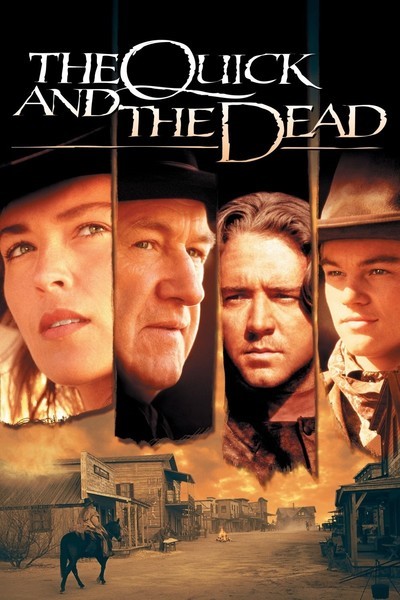
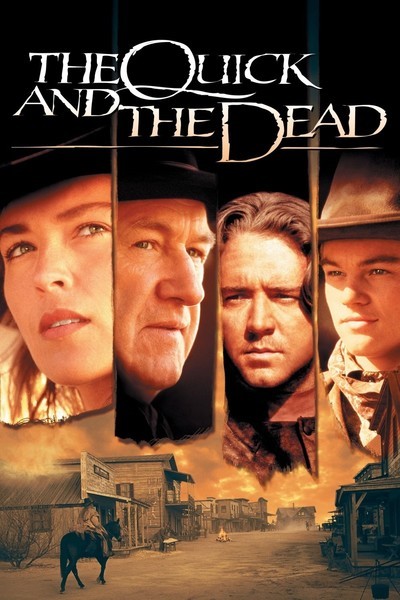

 The estimable Joseph F. BIroc (who had lensed Stewart’s most beloved movie, “It’s a Wonderful Life” and would do more memorable desert work in “Blazing Saddles” (1974) (not to mention “Airplane!”, “Towering Inferno,” and Aldrich’s “Hush, Hush, Sweet Charlotte” and “The Longest Yard”, “Ulzana’s Raid,” etc.) shot the Arizona and California desert locations and the motley cast. Frank DeVol provided too much overwrought music (musical minimalism had not been invented yet, though Robert Bresson for one made movies with minimal musical underlinings). Aldirch’s usual (15-time) editor Michael Luciano (Oscar nominated for this and three other Aldrich movies, for two of which he won his own guild’s award) was deft with the action sequences, but could have cut more IMO.
The estimable Joseph F. BIroc (who had lensed Stewart’s most beloved movie, “It’s a Wonderful Life” and would do more memorable desert work in “Blazing Saddles” (1974) (not to mention “Airplane!”, “Towering Inferno,” and Aldrich’s “Hush, Hush, Sweet Charlotte” and “The Longest Yard”, “Ulzana’s Raid,” etc.) shot the Arizona and California desert locations and the motley cast. Frank DeVol provided too much overwrought music (musical minimalism had not been invented yet, though Robert Bresson for one made movies with minimal musical underlinings). Aldirch’s usual (15-time) editor Michael Luciano (Oscar nominated for this and three other Aldrich movies, for two of which he won his own guild’s award) was deft with the action sequences, but could have cut more IMO.